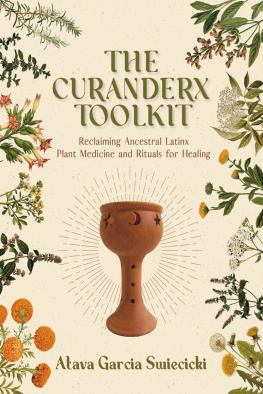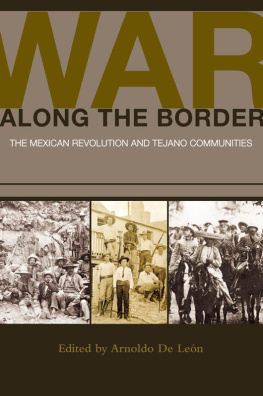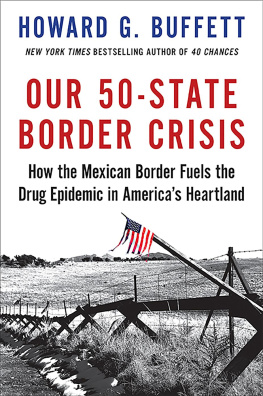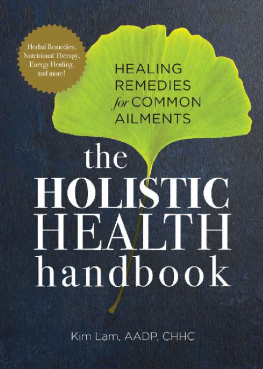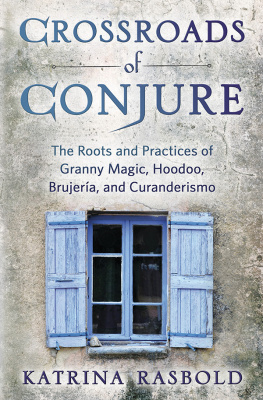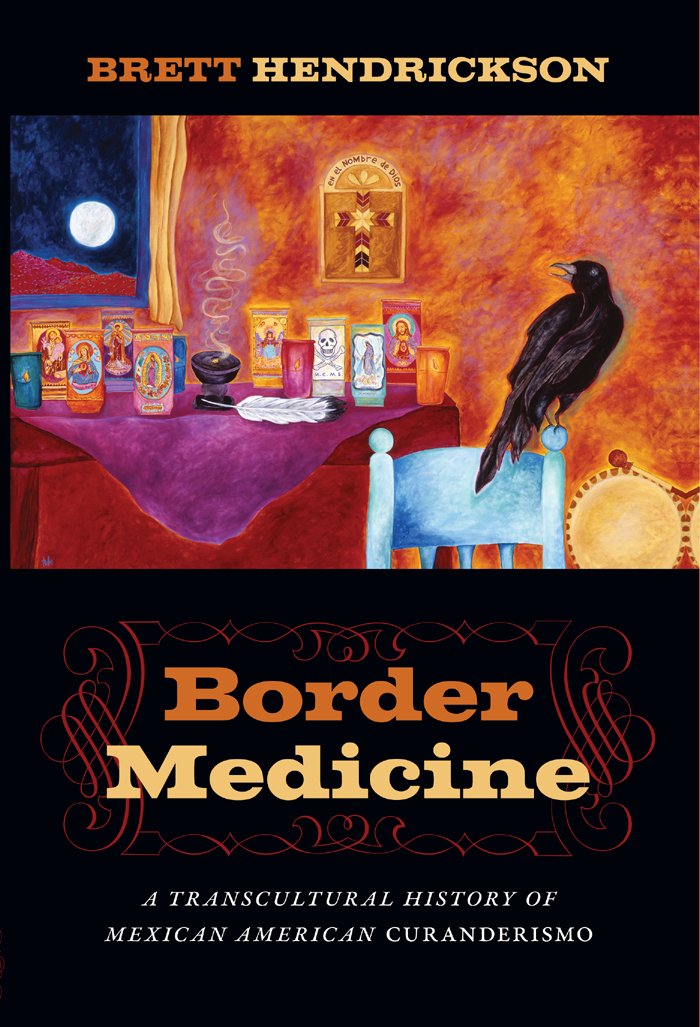BORDER MEDICINE
NORTH AMERICAN RELIGIONS
Series Editors: Tracy Fessenden (Religious Studies, Arizona State University), Laura Levitt (Religious Studies, Temple University), and David Harrington Watt (History, Temple University)
In recent years a cadre of industrious, imaginative, and theoretically sophisticated scholars of religion have focused their attention on North America. As a result, the field is far more subtle, expansive, and interdisciplinary than it was just two decades ago. The North American Religions series builds on this transformative momentum. Books in the series move among the discourses of ethnography, cultural analysis, and historical study to shed new light on a wide range of religious experiences, practices, and institutions. They explore topics such as lived religion, popular religious movements, religion and social power, religion and cultural reproduction, and the relationship between secular and religious institutions and practices. The series focuses primarily, but not exclusively, on religion in the United States in the twentieth and twenty-first centuries.
BOOKS IN THE SERIES:
The Notorious Elizabeth Tuttle: Marriage, Murder, andMadness in the Family of Jonathan Edwards
Ava Chamberlain
Crossing the Water and Keeping the Faith: Haitian Religion in Miami
Terry Rey and Alex Stepick
Suffer the Little Children: Uses of the Past in Jewish and African American Childrens Literature
Jodi Eichler-Levine
Religion Out Loud: Religious Sound, Public Space, and American Pluralism
Isaac Weiner
Walking Where Jesus Walked: American Christian Holy Land Pilgrimage
Hillary Kaell
Border Medicine: A Transcultural History of Mexican American Curanderismo
Brett Hendrickson
Border Medicine
A Transcultural History of Mexican American Curanderismo
Brett Hendrickson

NEW YORK UNIVERSITY PRESS
New York and London
NEW YORK UNIVERSITY PRESS
New York and London
www.nyupress.org
2014 by New York University
All rights reserved
References to Internet websites (URLs) were accurate at the time of writing. Neither the author nor New York University Press is responsible for URLs that may have expired or changed since the manuscript was prepared.
Library of Congress Cataloging-in-Publication Data
Hendrickson, Brett.
Border medicine: a transcultural history of Mexican American curanderismo /
Brett Hendrickson.
pages cm Includes bibliographical references and index.
ISBN 978-1-4798-3478-5 (hardback) ISBN 978-1-4798-4632-0 (pb)
1. Mexican AmericansMedicine. 2. Mexican AmericansRelgion.
3. Traditional medicineMexican-American Border Region.
4. HealingMexican-American Border Region. I. Title.
GR111.M49H46 2014
973.0468722 23 2014024571
New York University Press books are printed on acid-free paper, and their binding materials are chosen for strength and durability. We strive to use environmentally responsible suppliers and materials to the greatest extent possible in publishing our books.
Manufactured in the United States of America
10 9 8 7 6 5 4 3 2 1
Also available as an ebook
For my family
CONTENTS
PREFACE
How did you get into that? is a question I often hear when I tell people that I study Mexican American religious healing. It is a reasonable question for any scholar, and perhaps especially in this case since, at least at first glance, it seems I share so little with the subjects of my research. I am a white man, a professor at an East Coast liberal arts college, and a member of the Protestant clergy (Presbyterian). My personal experiences with religion are numerous, but they have rarely intersected with the type of religious healing treated in this book. To be more specific, I am not Catholic, Latino, or even particularly given to experimentation in alternative, religious, or metaphysical medicine. So how did I get into this? Or, more pointedly, since I am not a member of the religious community I study, what role do I play as an academic researcher and writer?
While I am not party to Mexican American folk, religious, and traditional healing, it is also true that I do have points of access to my subject area related to some of my personal experiences. First, in my late teens and early twenties, I lived in Argentina, and as a result of those years, I speak Spanish fluently. And although Argentina is hardly identical to the U.S.-Mexico border region, the economic disparities, the colonial history, and the ubiquity of popular forms of Catholicism are characteristics that are shared across Latin America. I have also had the opportunity to live in three border states: Texas, New Mexico, and Arizona. My years in Arizona were perhaps most important in terms of this book, since that is where I carried out my graduate education and where I served as pastor of Guadalupe Presbyterian Church, a small Spanish-speaking congregation of Yaqui Indians and recent Mexican immigrants. For three years, I listened to the stories of my congregants, stories that included plenty about sickness, healing, the power of God, relatives crossing the desert, and the almost daily slights of living in a poor part of the Phoenix area under the regime of Sheriff Joe Arpaio. Pastoral ethics have precluded me from incorporating these stories and experiences in my academic work, but these religious relationships of care have done much to create and sustain in me an abiding interest in religious medicine and conceptions of health for Mexicans, Mexican Americans, and their Anglo neighbors in the American West and Southwest.
In addition to my personal relationships with Mexican Americans seeking health and wholeness in their religion, my academic training also led me to the topic of healing. I came of age, as it were, when scholars of American religions were eagerly refocusing their work in the areas of lived religion, popular forms of devotion, the untold stories of women and racial and ethnic minorities, and understudied geographic areas like the West and Southwest. I began my doctoral program thinking I would study popular Mexican Catholicism, especially in relationship to the veneration of saints. However, as I began to explore this topic, I realized that the overwhelming majority of petitions to saints, mandas (contractual promises made to a saint in exchange for the saints help), and the paraphernalia left at saints shrines had to do with sickness and health. Soon, I had committed myself to the study of Mexican American folk and religious healing, often referred to as curanderismo. As I quickly discovered, curanderos and curanderas (healers) in the territories and states north of the border have had a small but not insignificant impact on Anglo American patients. As I followed the story of these interactions through the twentieth century and into the present, I uncovered more and more of these cross-cultural religious healings. This means that this book differs from earlier studies of curanderismo in that it focuses on the transcultural and multiethnic history of Mexican American religious healing in the United States. As I have encountered them, Mexican American popular religious practices flourish not at the margins of Anglo American society but as deeply enmeshed within American religious experience writ large. My aim, then, is to examine critically the complex relationships that have existed for many decades between Mexican American religious healing and the important, but similarly understudied, area of American religious, metaphysical, and alternative medicine and healing.


